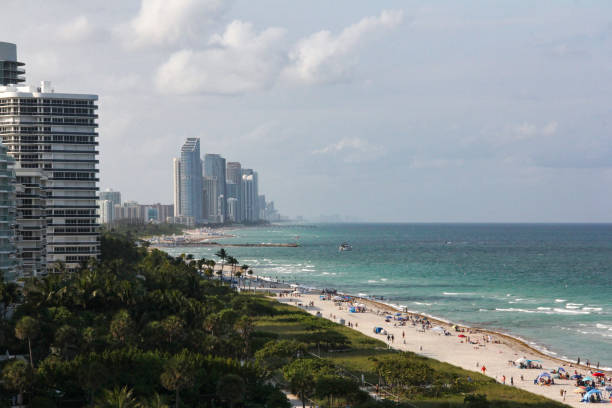February is set to shatter heat records, with meteorologists attributing the extreme temperatures to human-driven global warming and the natural El Niño climate pattern.
As the month progresses, climate data is showing unprecedented spikes, particularly in sea-surface temperatures. This acceleration in warming is causing experts to struggle with understanding the rapid changes.
Dr. Joel Hirschi from the UK National Oceanography Centre notes that the planet’s warming is accelerating, with sea surface temperatures breaking previous records by substantial margins.
The warming trend, driven by ongoing high CO2 emissions and reduced aerosols, is expected to peak around 2°C above pre-industrial levels, although predictions are uncertain due to erratic climate behavior.
According to Berkeley Earth scientist Zeke Hausfather, February 2024 is on track to become the hottest February on record, following a string of record-breaking months in 2023. Although a cooling phase from El Niño might follow, climate models suggest that recent temperature anomalies could still lead to new records.

The first half of February has already been remarkable. Maximiliano Herrera, a blogger on extreme temperatures, described the surge in heat records across thousands of meteorological stations as “insane” and “total madness.”
Countries like Morocco and China have reported extreme temperatures, with Morocco seeing winter temperatures exceeding 33.9°C, and Harbin, China, closing its ice festival due to unseasonably warm conditions.
Monitoring stations worldwide, from South Africa to Japan, have recorded unprecedented heat. In total, 140 countries have broken monthly heat records this month, a stark increase compared to previous years.
The unusually high ocean surface temperatures are raising concerns about potential severe storms later in the year. Hurricane specialist Michael Lowry highlighted that sea surface temperatures in key hurricane development regions are as warm as they usually are in mid-July.
Climatologists are still analyzing the causes of these anomalies. While El Niño has contributed significantly, other factors like reduced aerosol pollution, weak trade winds, and changes in ocean circulation also play roles.
Katharine Hayhoe from The Nature Conservancy emphasizes that the rate of change is faster than ever documented, suggesting that the impact on human societies might be underestimated.
With El Niño weakening, temperatures in the equatorial Pacific are expected to ease by late spring or early summer. However, continued high temperatures in the North Atlantic could signal intense hurricane activity. Without significant cuts in carbon emissions and forest preservation efforts, the risks of climate change will continue to escalate.

